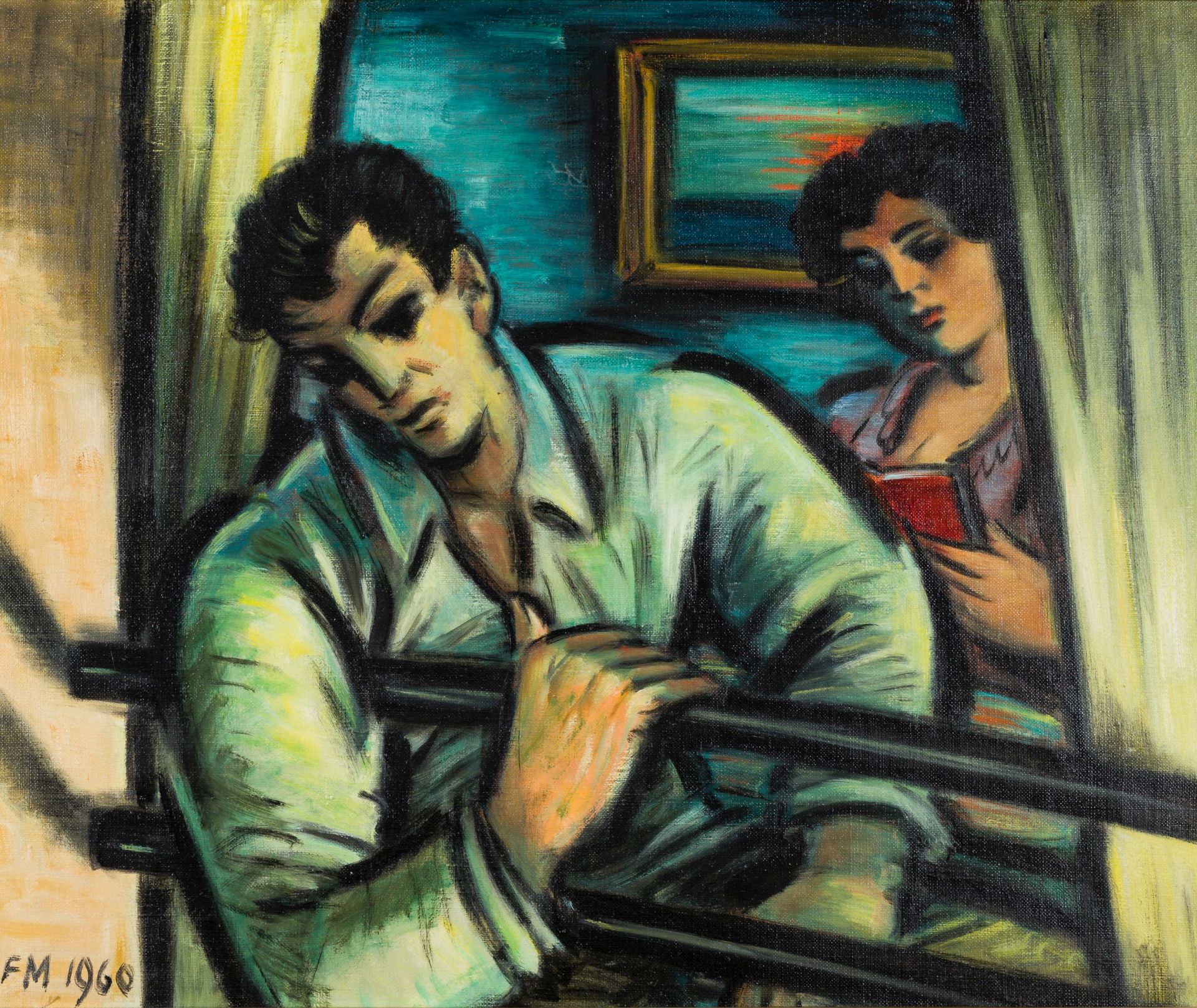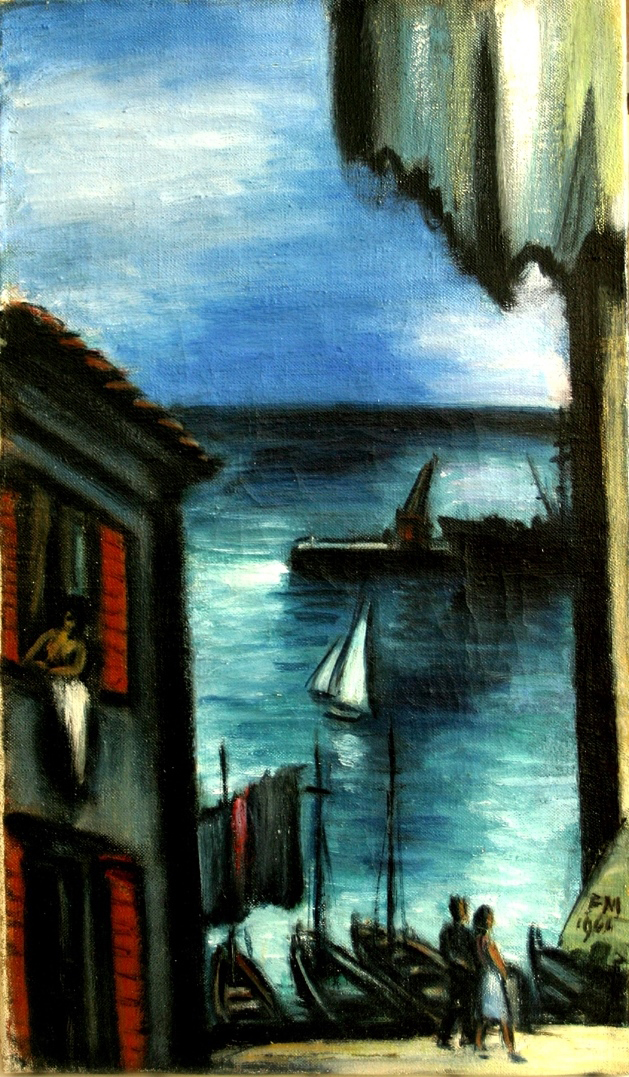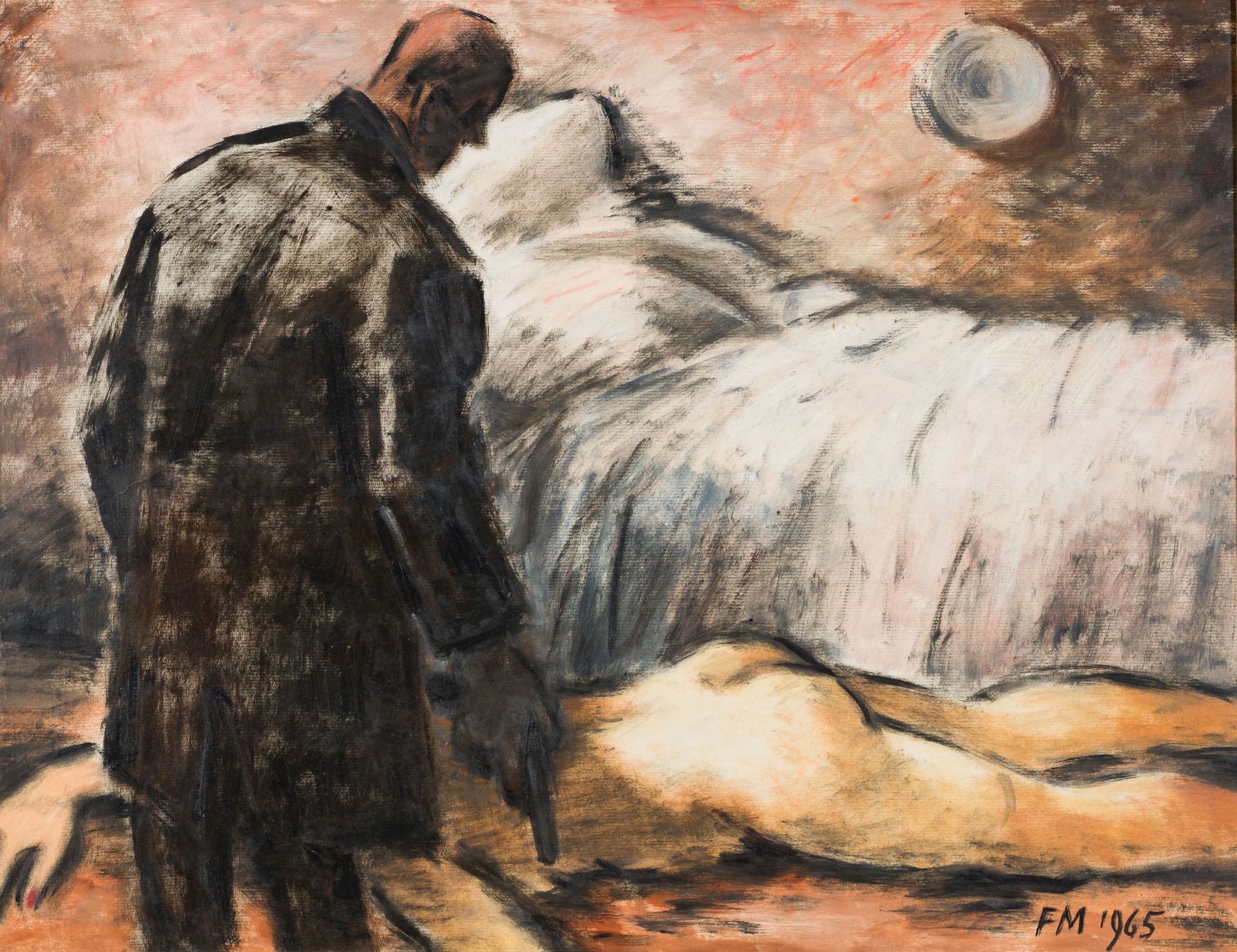(1889-1972)
Frans Masereel was born in Belgium in 1889 and was a graphic artist, draftsman and painter. He attended the art academy in Ghent. In 1910 he moved to Paris with Pauline Imhoff, his future wife, and in 1915 to Switzerland. His first etchings and woodcuts had appeared in magazines and from 1917 onwards the first linoleum and woodcut series and visual novels were created. After his return to Paris, he created watercolors that reflected the Parisian atmosphere. In Equihen, near Boulogne-sur-Mer, Masereel painted around 100 pictures, which brought him international recognition. His monumental portraits such as Femme assise and L’Accordéoniste were the highlight of his artistic output. Frans Masereel died in Avignon in 1972.
Frans Masereel creates a universal reality from the material of the momentary, concrete and local. The life of the big cities, the street and the fate of the masses in their historical context drive the artist who is fighting for a humane world and become a source of inspiration. The clear visual language of his woodcuts is committed to rationalism, but lacks the sarcasm of Otto Dix or Georg Grosz. His work is divided between subjective experiences and objectively filtered out generalizations whose concern is the representation of the ’naked truth‘. The belief that art can change something moves the artist less to approach an avant-garde, purely artistic goal, but rather with his symbolic vocabulary, through numerous publications in magazines and journals, in the service of social justice and Face pacifism. For Frans Masereel, creativity and moral responsibility go hand in hand.
In painting, pictures also emerge that take up hopeful, life-affirming subjects. Formally you can recognize the wood cutter behind the work. Strong dark lines combined with large, luminous areas of color create clear, simple compositions. Nevertheless, the style is looser and more relaxed.
In the woodcut, the artist only uses strong black and white contrasts. Its clear forms and compositions are captivatingly complex. Frans Masereel knows how to make symbols of everyday, dramatic world events out of masterfully placed lines and surfaces.
Masereel is difficult to classify stylistically. Throughout his life he remained true to a realism that most closely resembles the French. Approximates realism.
Source: https://de.wikipedia.org/wiki/Frans_Masereel
If you would like to buy works by the artist Frans Masereel online, you will find examples here in our gallery.


